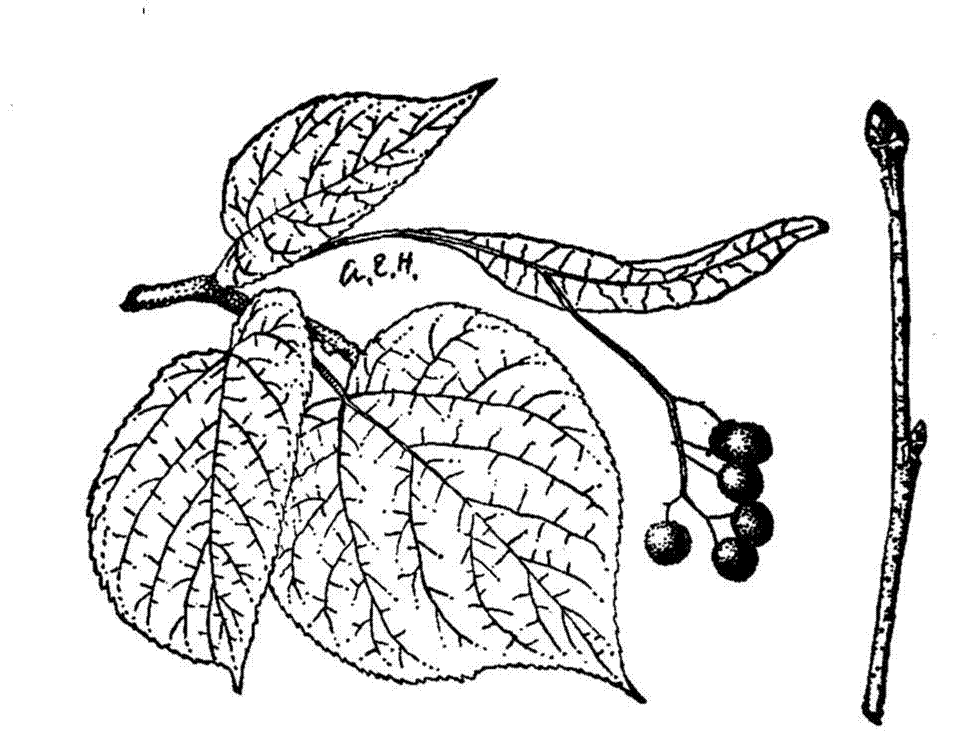– by Dave Schroeder
 The American basswood (Tilia americana), sometimes called the American linden is an uncommon tree in Eastern Connecticut’s forests. It is nitrogen demanding and prefers calcareous soils and moist sites. Basswood is relatively easy to identify during the summer because of its large (up to 6” wide), broadly ovate leaves with a cordate, or heart-shaped, base. In the winter it is probably most easily identified by the plump buds which have 2 or 3 visible, green or reddish scales or the fruit, if present. The fruit are ovoid, nutlike structures (drupes) about ¼” in diameter. They are borne in clusters on a long stalk attached to a leaf-like bract. Basswood is one of the more difficult trees to identify by bark characteristics.
The American basswood (Tilia americana), sometimes called the American linden is an uncommon tree in Eastern Connecticut’s forests. It is nitrogen demanding and prefers calcareous soils and moist sites. Basswood is relatively easy to identify during the summer because of its large (up to 6” wide), broadly ovate leaves with a cordate, or heart-shaped, base. In the winter it is probably most easily identified by the plump buds which have 2 or 3 visible, green or reddish scales or the fruit, if present. The fruit are ovoid, nutlike structures (drupes) about ¼” in diameter. They are borne in clusters on a long stalk attached to a leaf-like bract. Basswood is one of the more difficult trees to identify by bark characteristics.
On a good site basswood can grow to 100 ft. tall and 3 ft. d.b.h. If it is lucky and escapes fires and the lumberman’s axe it can live to be over 200 years. It is shade tolerant and a prolific sprouter. The ability to sprout from the stump and grow in low light conditions allows it to survive where many other species cannot. Basswood has a tendency to improve the quality of soil where it is growing. Its leaves are high in calcium and magnesium and also contain some nitrogen, phosphorus and potassium. As the leaves break down these nutrients are added to the soil.
Over much of its range basswood is valued as a timber species. Its wood is soft, very light and easily worked making it desirable for turned products. Hand carvers especially value basswood and many a decoy was created using this wood. Other products made from basswood are cabinets, boxes, wooden toys, musical instruments and paper. The inner bark of basswood has very long and strong fibers which when processed properly can be used for cordage or rope. Native Americans soaked the bark in a stream until the non-fiberous material deteriorated. The remaining fibers would be twisted together to make rope. Another product derived from basswood in some areas is honey. The fragrant flowers yield nectar that results in a distintly flavored, high quality honey.
Although not an important wildlife tree, the seeds of basswood are eaten by several rodents including squirrels and the twigs are browsed by deer and rabbits. Because of its thick, dense crown, basswood is often used as a shade tree. It has few insect or disease problems and grows rapidly on a good site.
This article originally appeared in the September 2003 ECFLA/WDLT Newsletter.

